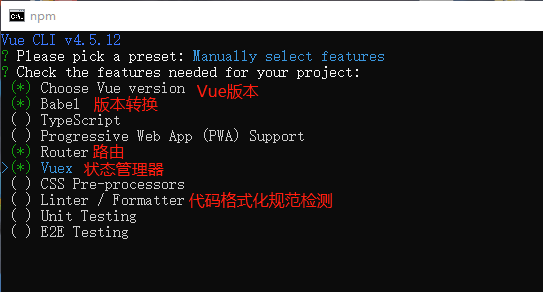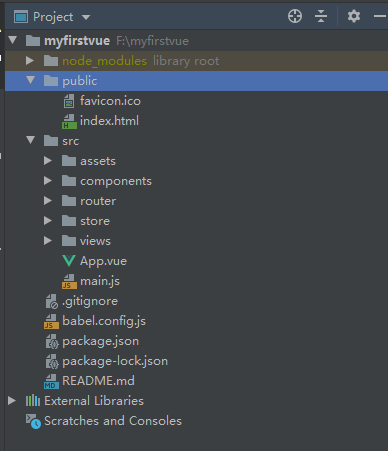Vue 根组件
<!DOCTYPE html>
<html>
<head>
<meta charset="utf-8">
<title>根组件</title>
</head>
<body>
<div id="app">
<h1>{{ title }}</h1>
<p>{{ title }}</p>sdfsdaf
sdfasdafsda
sdafsda
sdafsad
sdafsdaf
fsdaf
</div>
<div id="main"></div>
</body>
<script src="js/vue.js"></script>
<script>
// template就是一个组件的html实体代码块
new Vue({
el: '#app',
data: {
title: '根组件'
},
// template模板,书写html代码块
// 根组件也可以添加template模板,但是建议直接使用挂载点
// 每个组件的template模板中只能解析一个(第一个)根标签
template: `
<!--<div></div>-->
<div id="home">
<h1>{{ title }}</h1>
<p>{{ title }}</p>
<i>{{ title }}</i>
</div>
<div>
{{ title }}
</div>
`
});
// 只要是被new出来的vue实例都是根组件,所以一个vue单页面项目中只需要出现一次new创建的vue实例
new Vue({
el: '#main'
})
</script>
</html>
Vue 局部组件
<!DOCTYPE html>
<html>
<head>
<meta charset="utf-8">
<title>根组件</title>
</head>
<body>
<div id="app">
<!--<localTag></localTag>-->
<!--资源出现在哪个模板,该资源就由该模板的拥有者提供-->
<!--++++组件不能绑定系统事件,但可以绑定自定义事件++++-->
<abc @mouseenter="abcEnter">{{ info }}</abc>
<abc></abc>
</div>
<div id="main">
<local-tag></local-tag>
</div>
<!--<div class="localTag">-->
<!--<h2>我是局部组件</h2>-->
<!--<p style="color: red;">我是局部组件的文本解释</p>-->
<!--<p @click="btnClick">我被点击了 {{ num }} 下</p>-->
<!--<hr>-->
<!--</div>-->
</body>
<script src="js/vue.js"></script>
<script>
// 局部组件
// 子组件的资源有自身提供
var localTag = {
// 挂载点是根组件的独有特性
// el: '.localTag',
// 子组件必须拥有自身template
template: `
<div id="localTag">
<h2>我是局部组件</h2>
<p style="color: red;">我是局部组件的文本解释</p>
<p @click="btnClick">我被点击了 {{ num }} 下</p>
<hr>
</div>
`,
// 子组件的data为方法的返回值字典
data: function () {
return {
num: 0
}
},
methods: {
btnClick: function () {
this.num++
}
}
};
// 如果想在页面中看见子组件,需要在根组件中使用该子组件
// 如果根组件要使用局部子组件,需要提前注册
new Vue({
el: '#app',
data: {
info: "message"
},
components: {
abc: localTag,
},
methods: {
abcEnter: function () {
console.log('abc被悬浮了')
}
}
});
new Vue({
el: '#main',
components: {
// 在页面中才有 <local-tag></local-tag>
// localTag: localTag
// 'localTag': localTag
// 'local-tag': localTag
localTag
}
})
</script>
</html>
vue 全局组件
<!DOCTYPE html>
<html>
<head>
<meta charset="utf-8">
<title>全局组件</title>
</head>
<body>
<div id="app">
<global-tag></global-tag>
</div>
</body>
<script src="js/vue.js"></script>
<script>
// 全局组件与局部组件的不同点:全局组件不用注册
// 全局组件用Vue.component()来声明定义,两个参数
// 第一个为组件名,第二个为组件内容
Vue.component('globalTag', {
template: `
<div>
<h2>我是全局组件</h2>
<p style="color: red;">我是全局组件的文本解释</p>
<p @click="btnClick">我被点击了 {{ num }} 下</p>
<hr>
</div>
`,
data: function() {
return {
num: 1
}
},
// computed: {
// num: function() {
// return 1
// }
// },
methods: {
btnClick: function () {
this.num++
}
}
});
new Vue({
el: '#app',
data: {
}
})
</script>
</html>
Vue 组件通信
<!DOCTYPE html>
<html>
<head>
<meta charset="utf-8">
<title>组件间的通信</title>
</head>
<body>
<div id="app">
<tag :super_msg="msg" @own_method="receiveInfo"></tag>
<p>{{ temp_info }}</p>
</div>
</body>
<script src="js/vue.js"></script>
<script>
// 父组件数据传递给子组件,通过自定义属性绑定的方式
// 子组件数据传递给父组件,通过自定义事件的发送
Vue.component('tag', {
props: ['super_msg'],
template: `
<div>
<h2 @click="sendInfo">{{ super_msg }}</h2>
</div>
`,
data: function () {
return {
info: '子级的信息'
}
},
methods: {
sendInfo: function () {
this.$emit('own_method', this.info)
}
}
});
new Vue({
el: '#app',
data: {
msg: '父级的数据',
temp_info: ''
},
methods: {
receiveInfo: function (info) {
this.temp_info = info
}
}
})
</script>
</html>
Vue-cli创建项目
项目部署操作
1 安装node环境 16.14.0环境
- 跟python比较
- node python
- npm pip3
- 安装cnpm,淘宝做的npm,以后使用npm的地方,都是用cnpm
2 安装cnpm
npm install -g cnpm --registry=https://registry.npm.taobao.org
3 安装cli脚手架
cnpm install -g @vue/cli
4 清空缓存(安装失败操作)
npm cache clean --force
5 创建项目
vue create 项目名
6 安装vue-cookie(进入项目目录下安装)
cnpm install vue-cookie --save
7 安装vue-axios
cnpm install vue-axios --save
8 启动vue
nmp run serve
9 复制新项目(node_modules目录不需要拷贝)
npm install
10 pycharm启动vue项目及高亮显示
https://www.cnblogs.com/zhangmingyan/p/11573165.html
vue 创建项目图形化操作



├─ node_moduls:项目依赖,当前项目的所有第三方包,(上传项目的时候不需要用:把项目给别人,这个文件夹删掉)
npm install 就会又把依赖重新装上
pi3 install -r request.txt
├─ public文件夹:(你不用动)
├─ favicon.ico 网站图标
└─ index.html 项目入口页面,单页面开发(整个vue项目就这一个页面,一般不会动它)
├─ src文件夹:代码文件夹(经常动,书写你的所有代码)
├─ assets文件夹 :存储项目中自己的一些静态资源,图片,js,css
├─ components文件夹:存储项目中的自定义组件(组件,小组件,公共组件)
├─ router文件夹:存储VueRouter路由相关文件(装了Router才有,否则没有,页面跳转)
├─ store文件夹:存储Vuex相关文件(vuex才有的,状态管理器)
├─ views文件夹:存储项目中的自定义组件(大组件,页面级组件,路由级别组件)
├─ App.vue:根组件
└─ main.js:整个项目的入口js
├─ .gitignore # git的忽略文件,讲到git才知道
├─ babel.config.js # 不用动
├─ package.json #依赖的模块
├─ package-lock.json #依赖的模块
└─ README.md # 介绍
项目组件介绍(重点)
1 每一个vue组件都有三部分
-template :放html代码
-script :放js相关的东西
-style :放css相关
2 vue中创建路由
-创建一个组件
-配置路由:
-在router.js中加入
{
path: '/freecourse',
name: 'freecourse',
component: FreeCourse
},
-路由跳转
<router-link to="/freecourse">跳转</router-link>
3 vue在组件中显示数据
在template:
{{变量}}
在script:
data: function () {
return {
course_list: ['python', 'linux', 'go','java']
}
4 vue中的axios
-安装:
npm install axios 在package.json中就能看到依赖
-在main.js中配置
//导入axios
import axios from 'axios'
//把axios对象付给$http
Vue.prototype.$http=axios
-在组件的js代码中写:
<template>
<div class="about">
<h1>免费页面</h1>
<button @click="init">点击</button>
<div v-for="course in app_list">{{ course }}</div>
</div>
</template>
<script>
export default {
name: 'Home',
data:function () {
return {
app_list:[]
}
},
methods:{
'init':function () {
var _this=this
this.$http({
url:'http://127.0.0.1:8001/course/',
method:'get',
}).then(function (response){
// console.log(response.data)
_this.app_list=response.data
})
},
5 页面挂载完成,执行数据加载
mounted:function () {
this.init()
}
6 vue中使用element-ui
饿了么开源的样式
安装 npm i element-ui -S
在main.js中配置
import ElementUI from 'element-ui';
import 'element-ui/lib/theme-chalk/index.css';
Vue.use(ElementUI);
去官方文档看样式赋值,粘贴
把vue项目编译成纯html,css,js
webpack:模块化
打包:npm run build
在项目路径下有个dist文件夹:html,css,js






 浙公网安备 33010602011771号
浙公网安备 33010602011771号